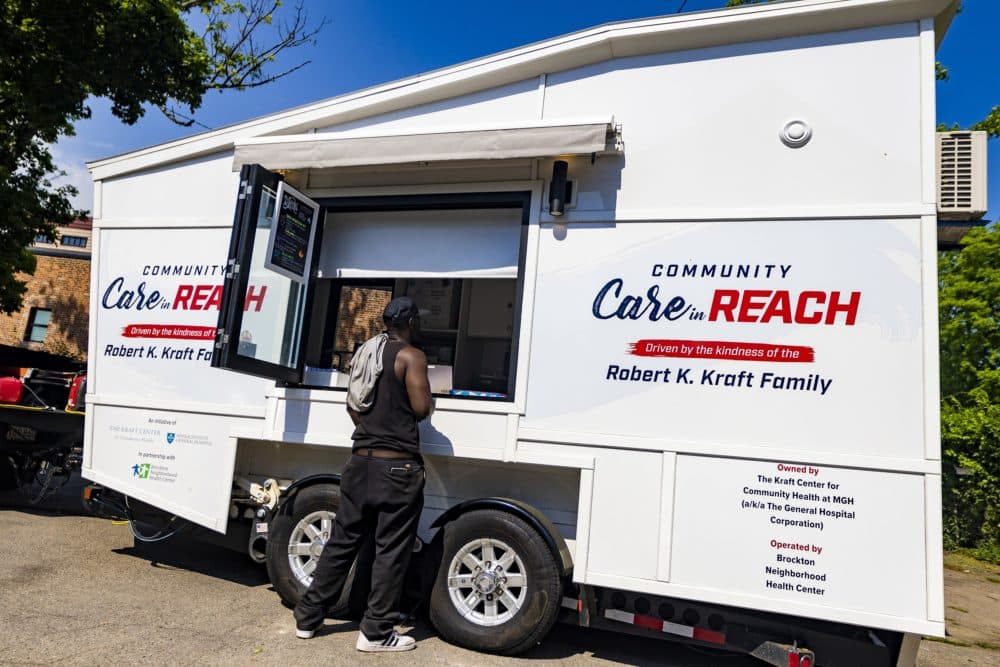Advertisement
It's an overdose crisis, not just an opioid crisis: takeaways from reporting on deaths in Brockton

Massachusetts, like many states, reports overdose deaths as an opioid crisis. But many people working to save lives say that framing is no longer accurate or useful. The presence of fentanyl in crack, cocaine, methamphetamine and many varieties of fake pills signals a sweeping drug overdose crisis, they say.
As deaths reach record highs, the warnings and tools that can prevent a fatal overdose have to reach people who are unaware they are at risk: people who don’t think they may be swallowing, sniffing, smoking or injecting an opioid that could shut down their breathing in seconds. People like Michelle, who smokes crack daily. She stopped breathing, pipe in hand, one day last year in Brockton.
“It was fentanyl,” Michelle says. “I didn’t die because there was someone there that knew [about naloxone] and they helped me.”
Michelle’s become a naloxone-carrying crusader. But surveys of people whose primary drug is crack or cocaine show most don’t carry the nasal spray that can reverse an opioid overdose. Michelle says that has to change. Anyone who gets pills or powder from a friend or a dealer needs a naloxone kit, too — as do their friends and family members.
That's among the key issues that came to light in WBUR's reporting on the experiences of people who use drugs in Brockton, one of many cities in Massachusetts where overdose deaths are rising. Brockton’s HEAL Coalition spent a little more than two years testing ways to reduce deaths as part of the national HEALing Communities study.
Here are some strategies the coalition and other researchers advising the group say show promise:
- Anyone using pills or powder needs a naloxone kit, too.
- Rebrand naloxone as an overdose prevention drug rather than a drug that reverses an opioid overdose to expand the circle of people who see its value.
- Hire people who are actively using drugs to hand out naloxone, show how to use it and explain the need to others.
- Do the same with fentanyl test strips and urge people to test every pill or powder before they take it.
- Consider rebranding needle exchange sites as harm reduction programs. Some people who don’t inject drugs say they don’t go into these sites, because they don’t need clean needles or don’t want to be seen as people who do.
- Stock crack and meth pipes in harm reduction programs to serve and engage with a wider variety of people who use drugs.
- Warn people using any illegal drug to take precautions like doing a test dose of any powder or pill then waiting a few minutes, and never using drugs while alone. Let people know there’s a hotline they can call if they don’t have a companion.
- Print messages about safe drug use in the languages spoken in your community.
- Work through churches and community groups that aren’t focused on drug use to help families understand addiction, treatment options and overdose prevention.
- Train health care providers to recognize addiction to drugs besides opioids, and to treat all people with respect.
- Find a way to collect and report real time data about what’s in the drug supply, who is dying where, at what age and other demographic information — as we have with COVID-19.
- Xylazine, an animal tranquilizer that’s showing up in the illegal drug supply, is the latest example of the need for up-to-date reporting. It makes reviving someone after an overdose and starting treatment more complicated.
Experts say people who still frame the rise in overdose deaths as an opioid crisis point out that fentanyl remains the likely cause of most deaths in Massachusetts. But people doing a line of coke at a bar, or taking a pill a friend gave them to sleep or stay awake, or the long-time crack smoker often have no idea fentanyl may be in that drug, too.
If the overdose crisis spreads unchecked to many more people who use drugs, there’s concern the U.S. could blow through models that predict half-a-million opioid overdose deaths by 2032.
